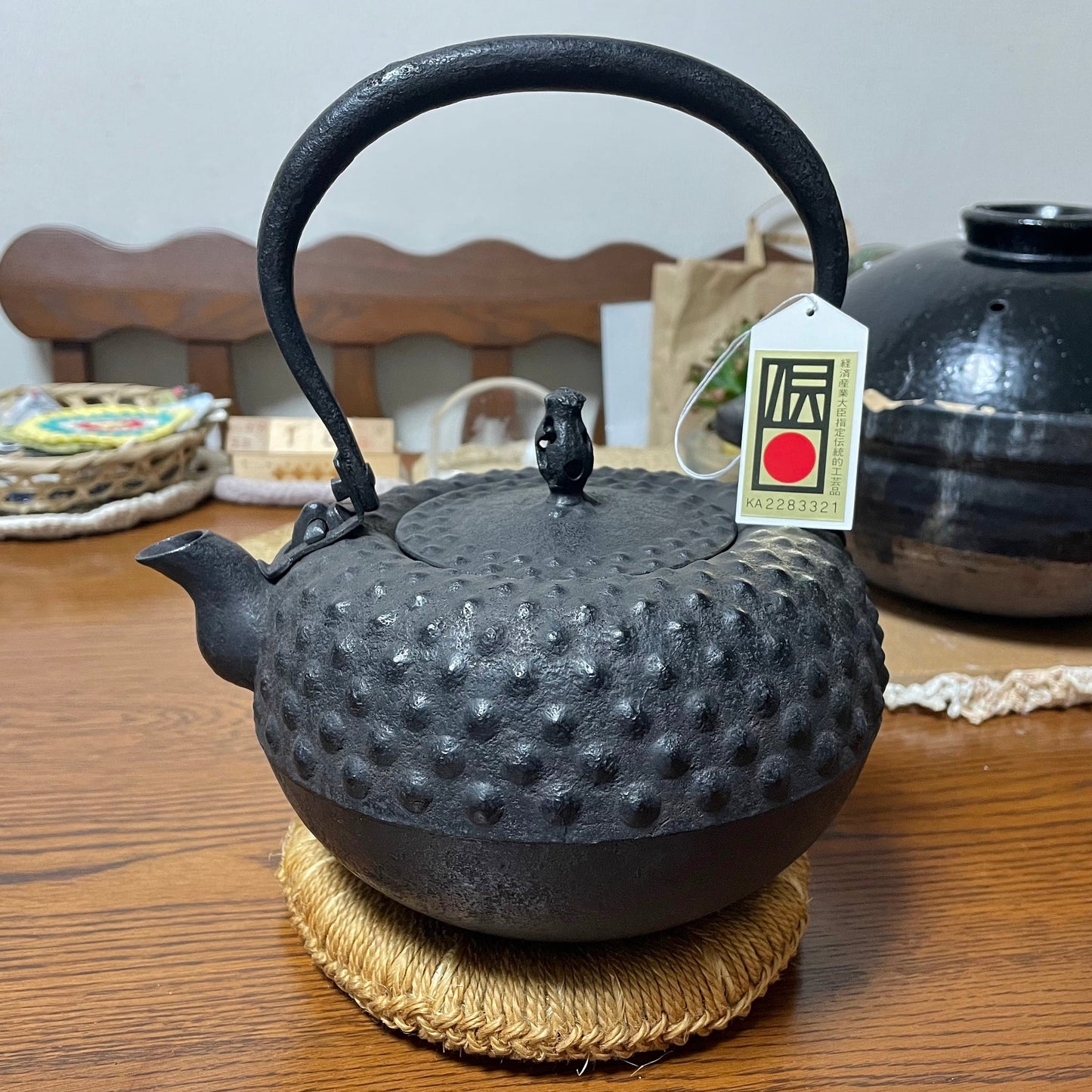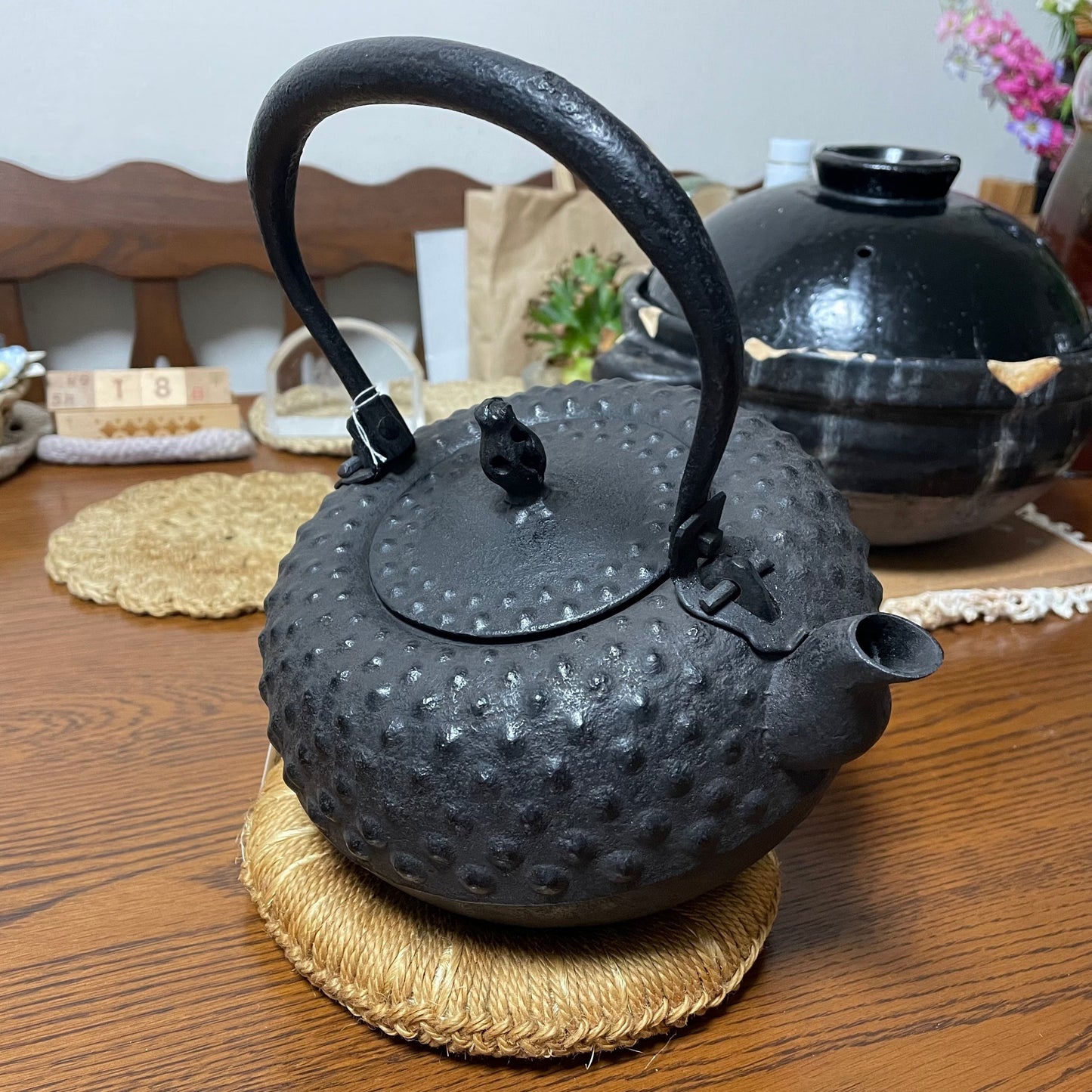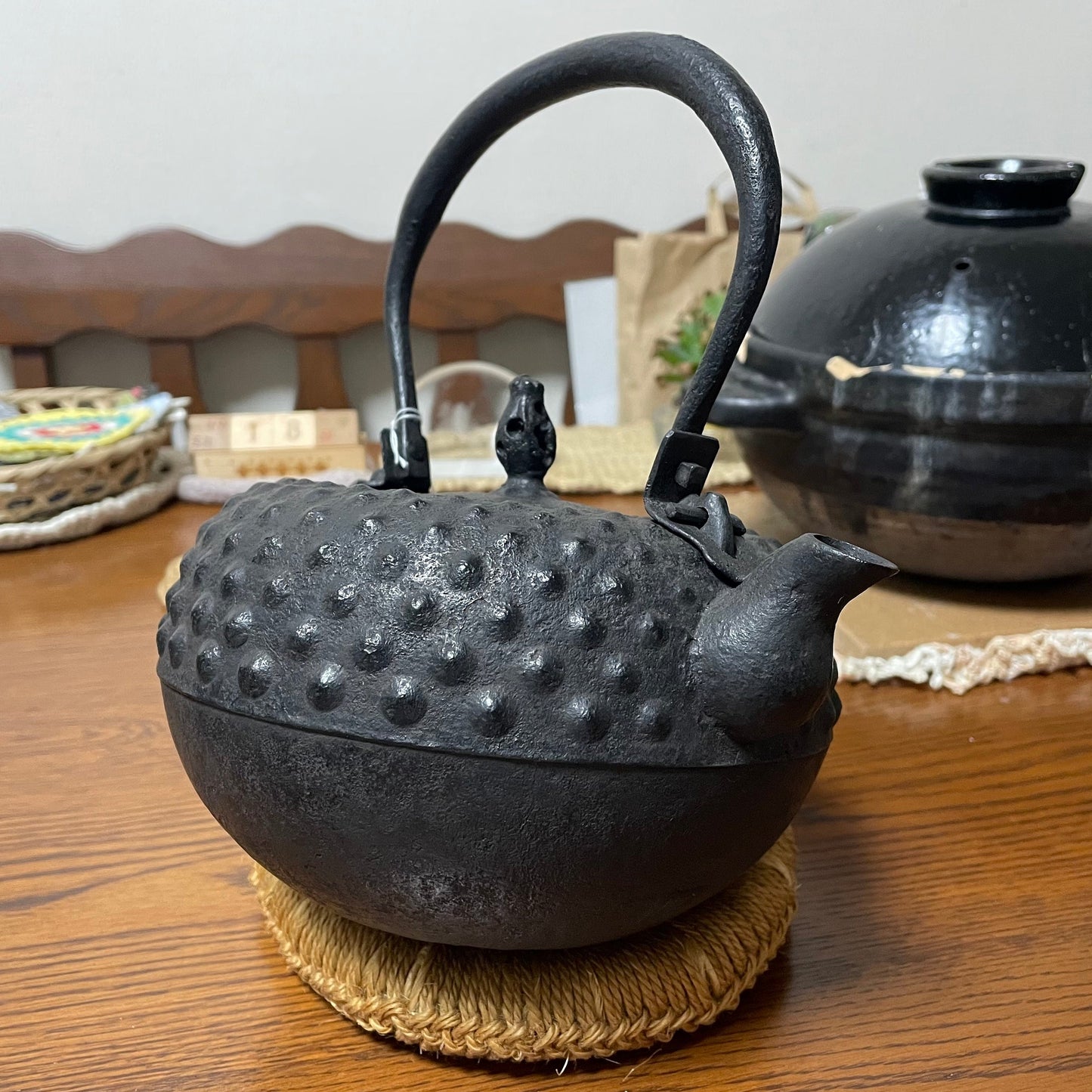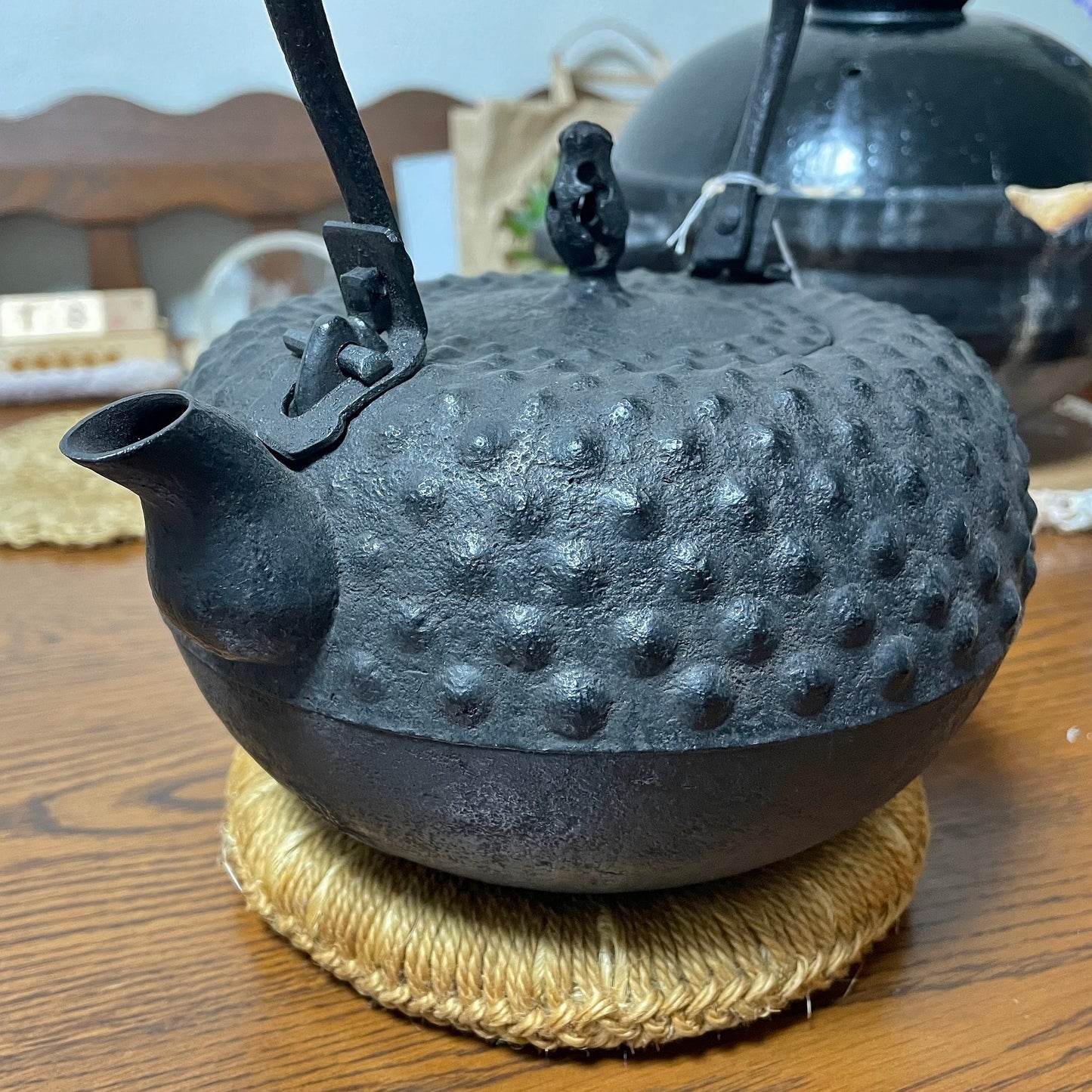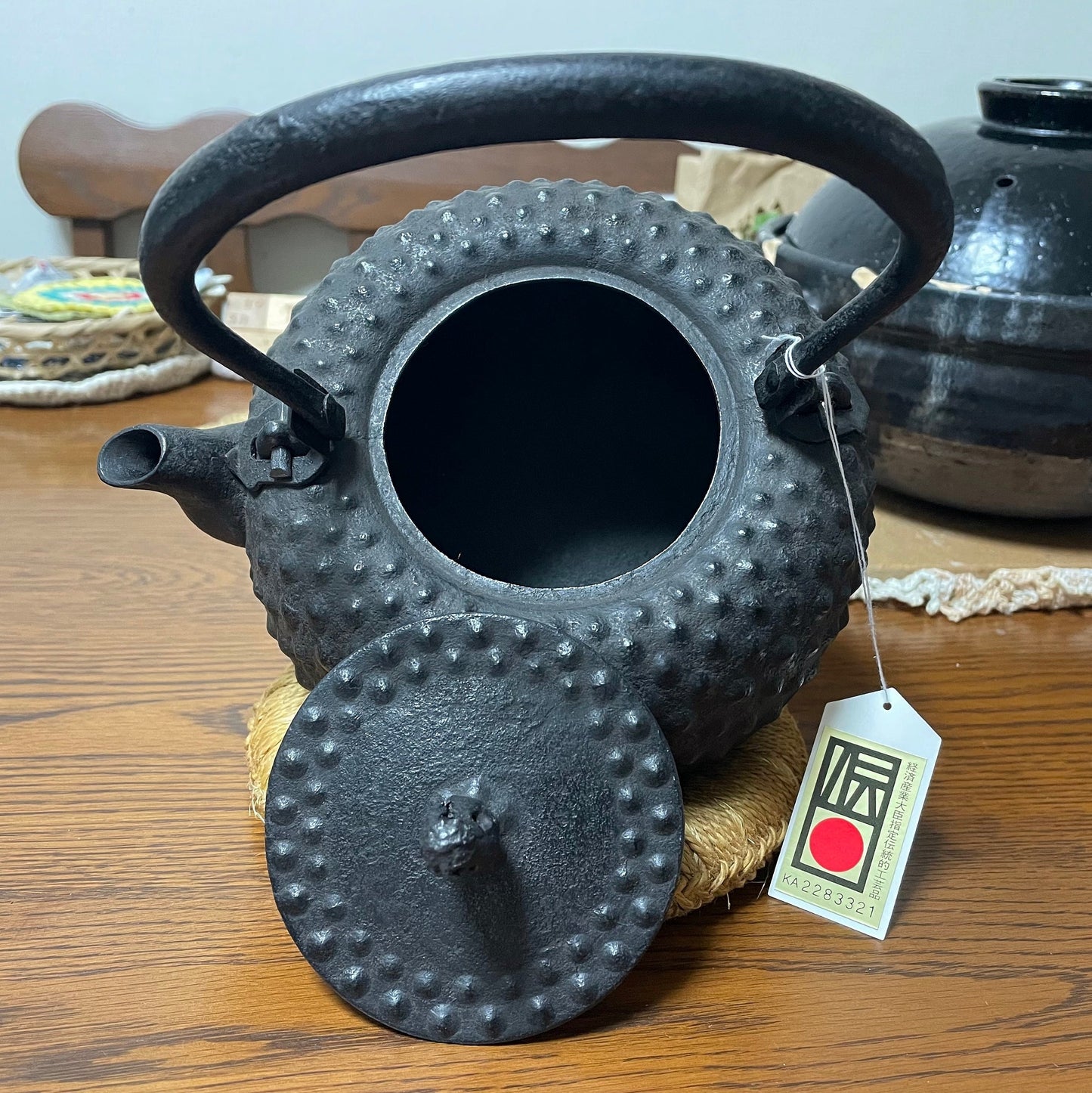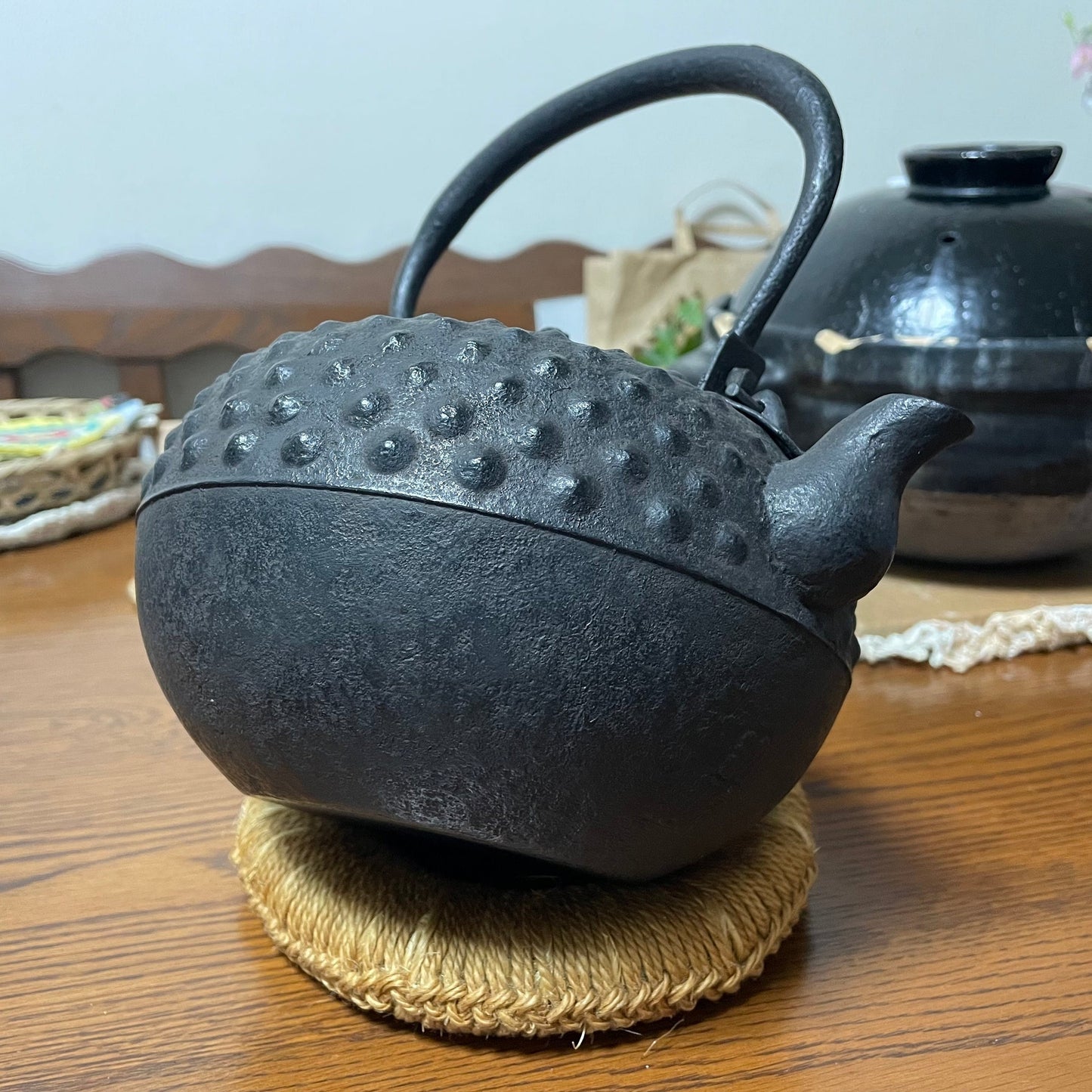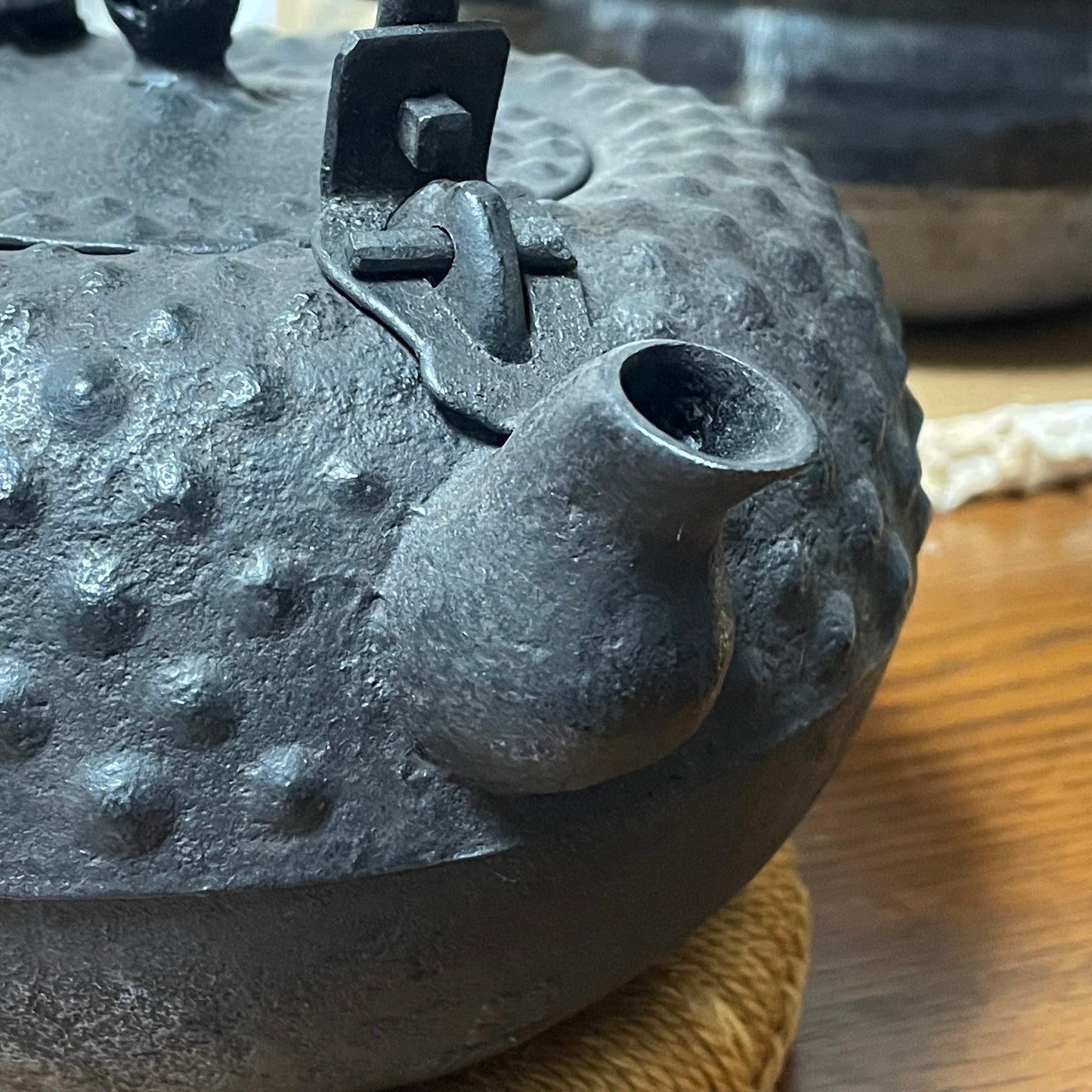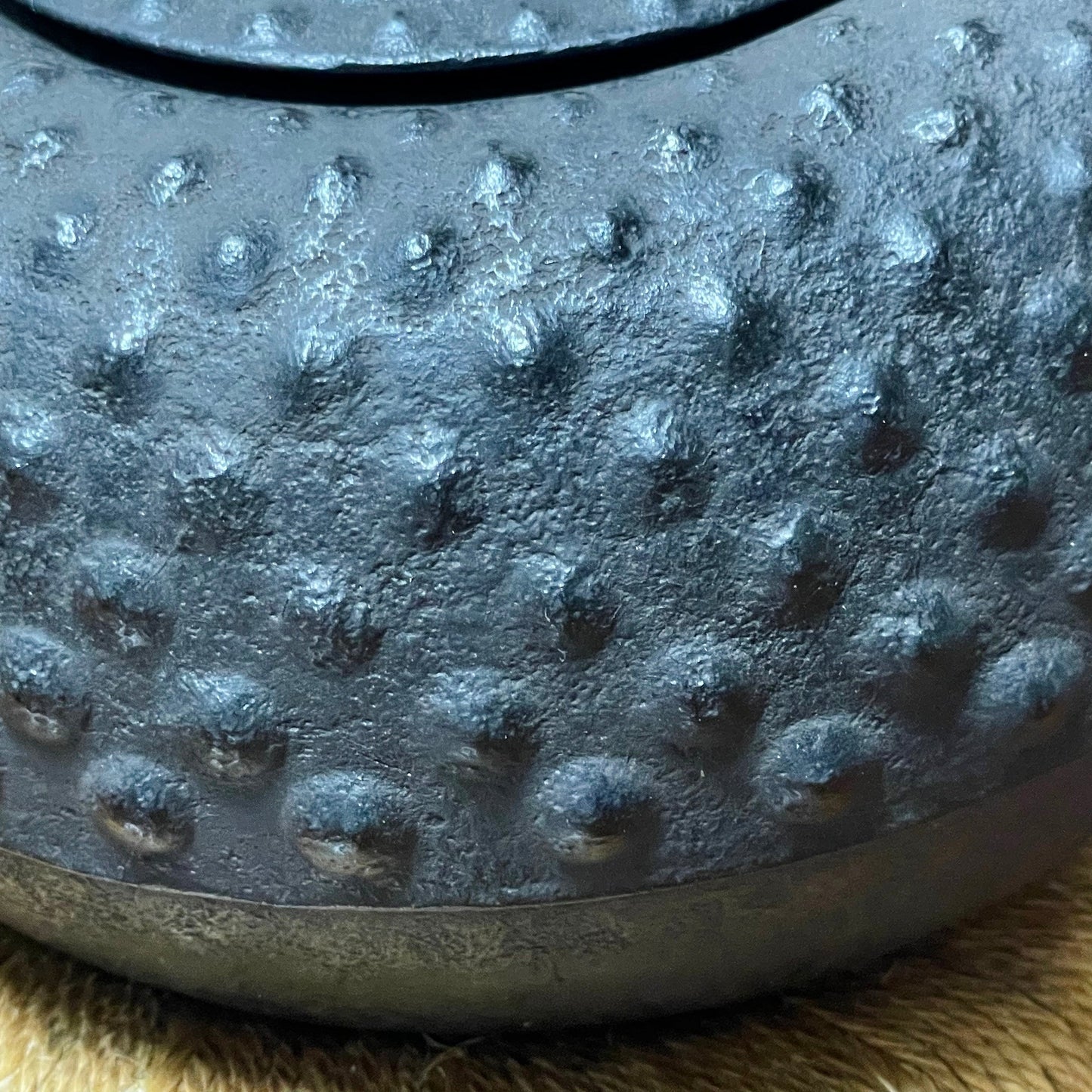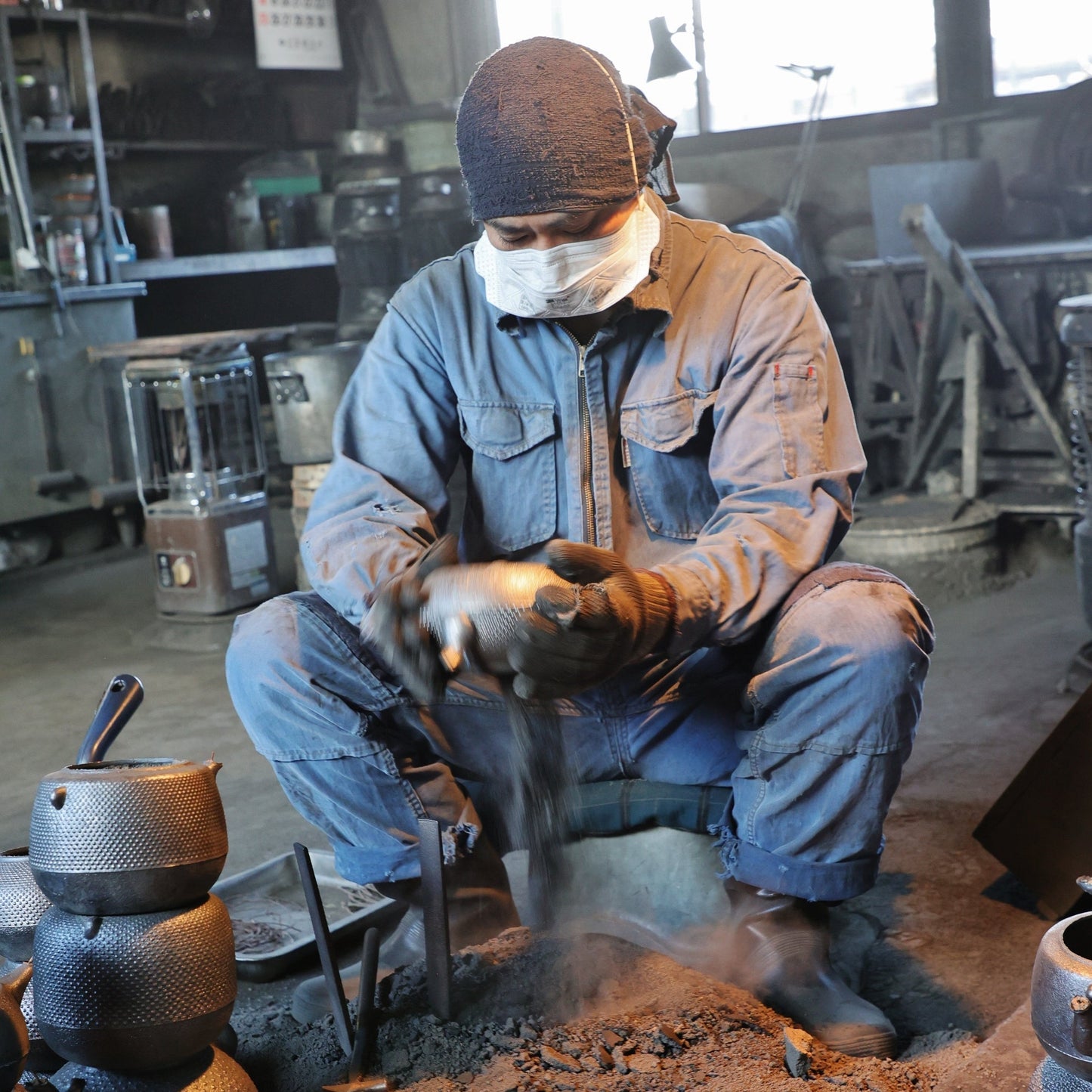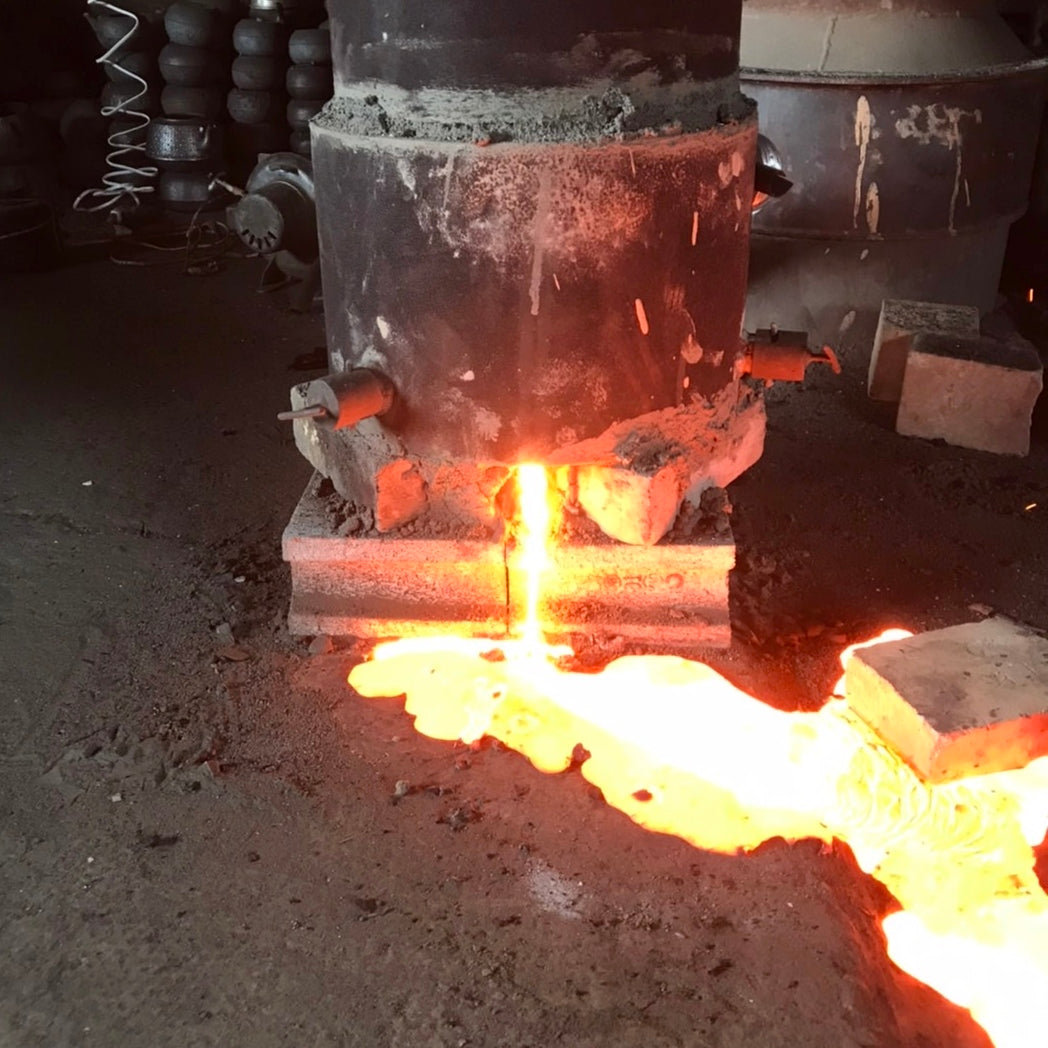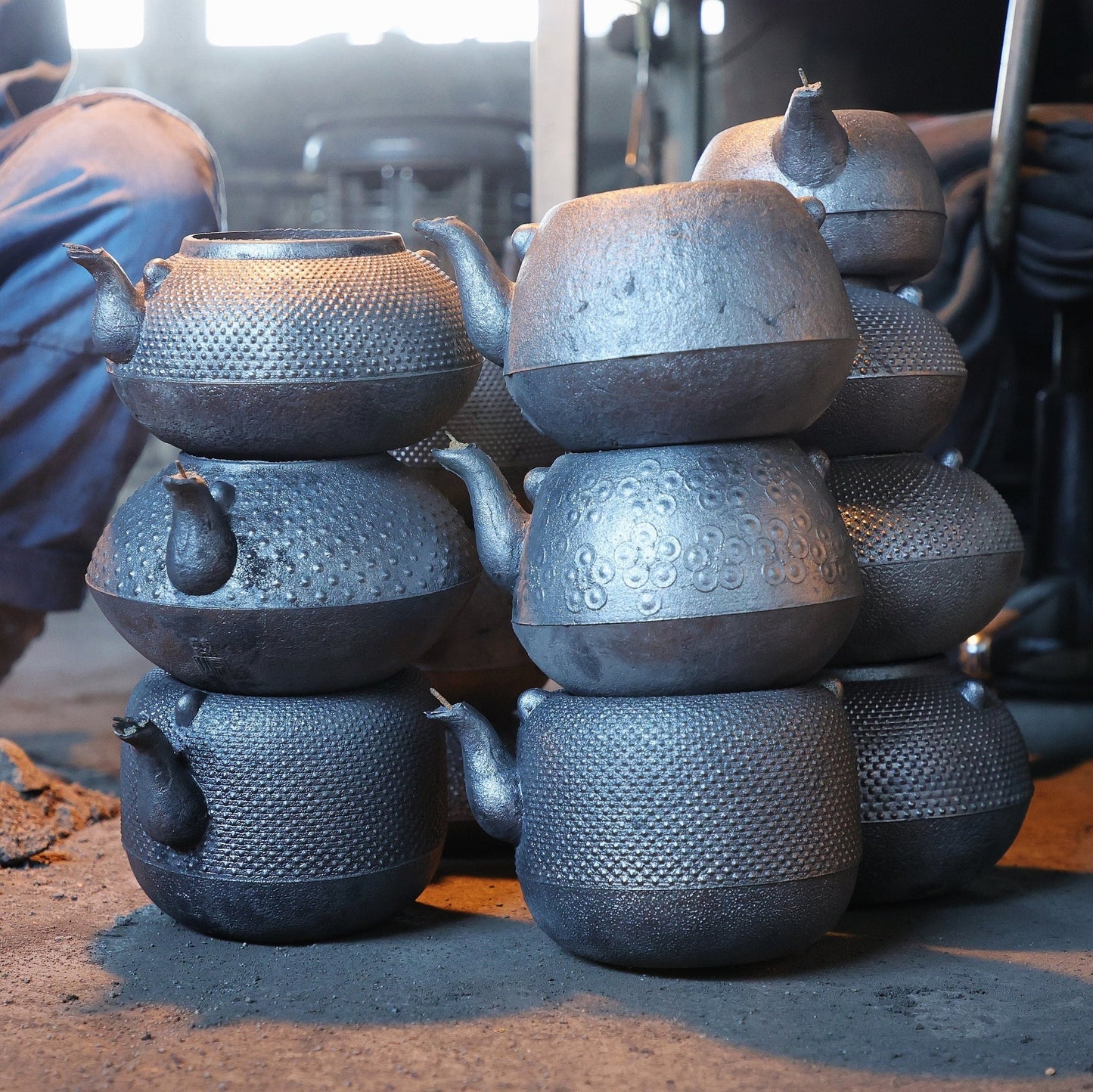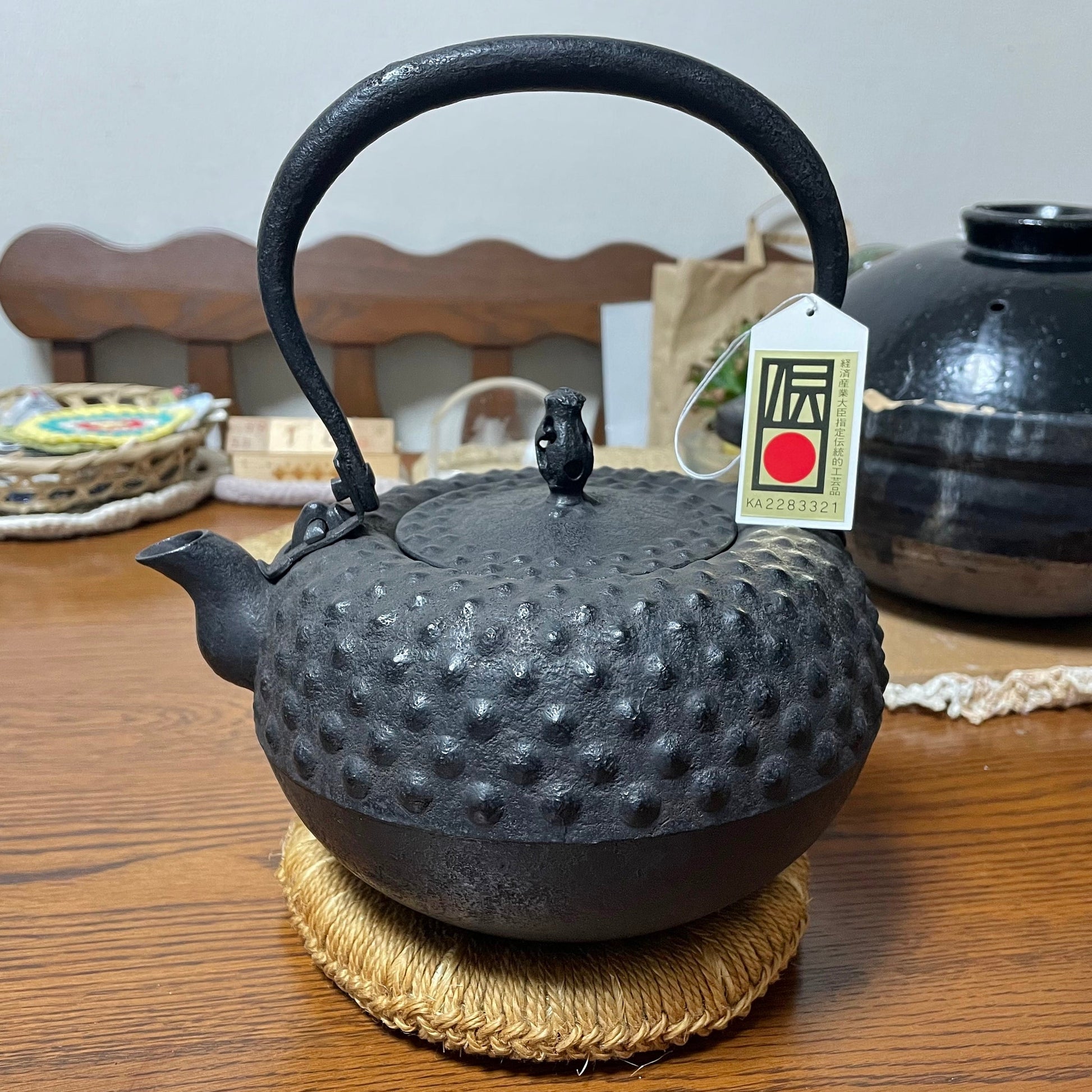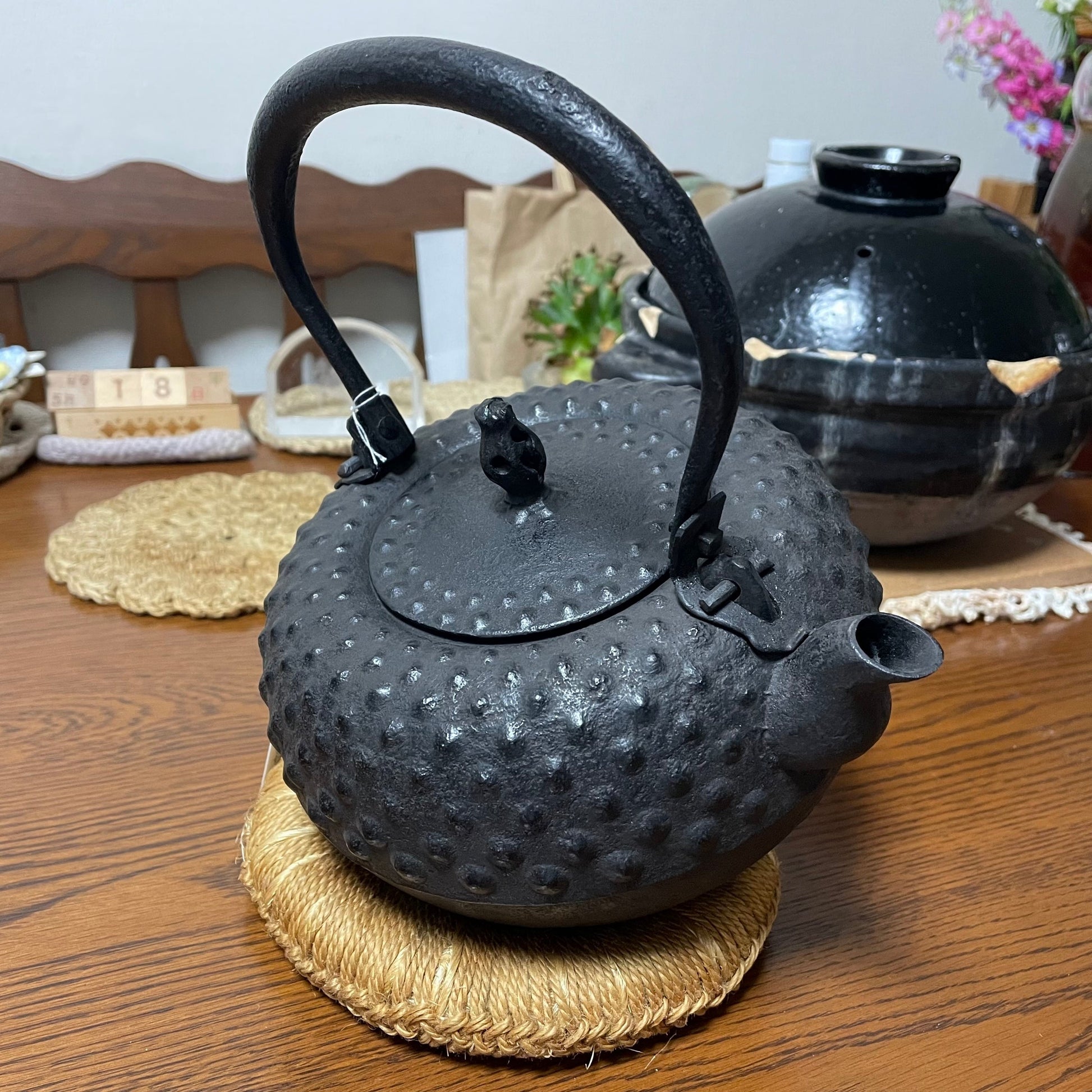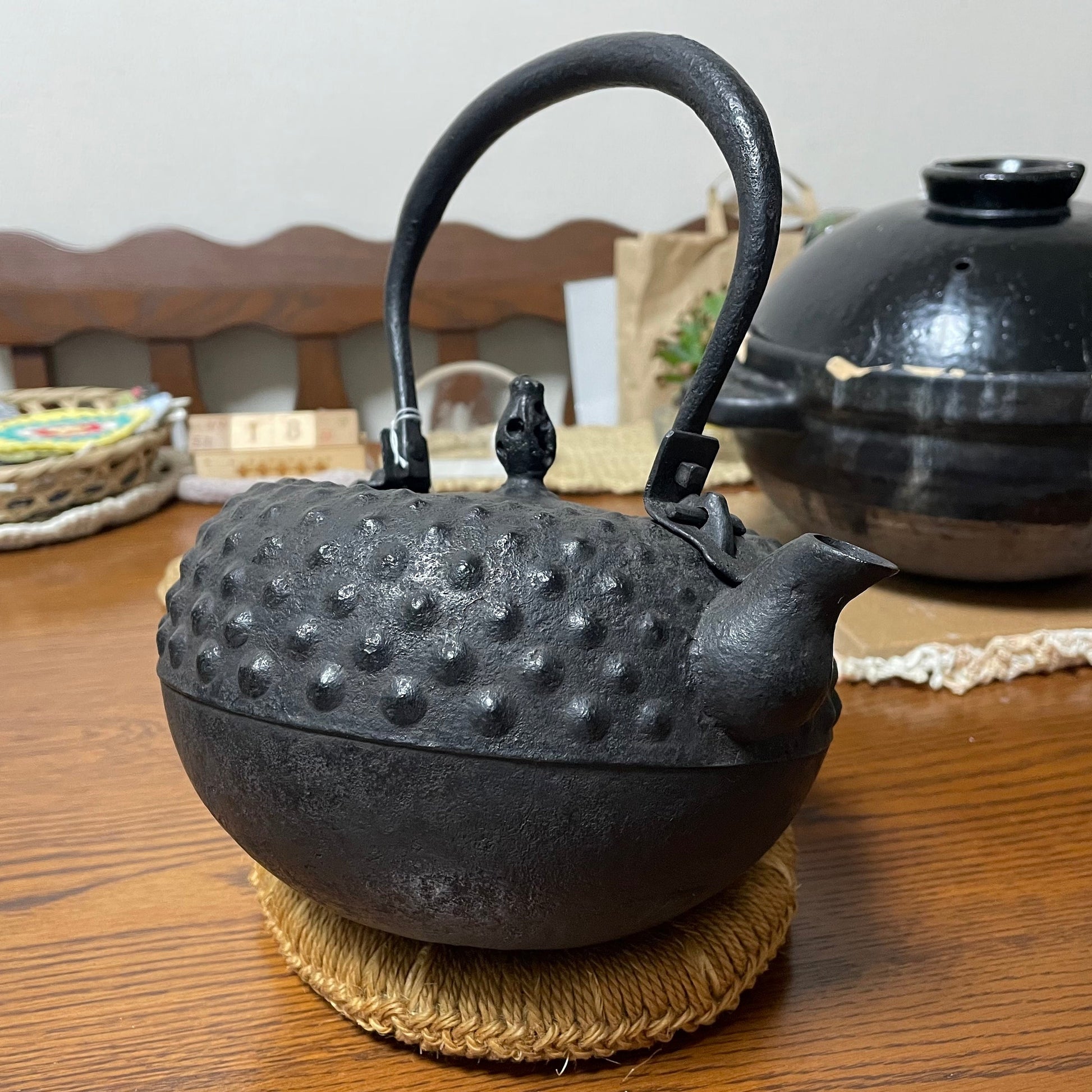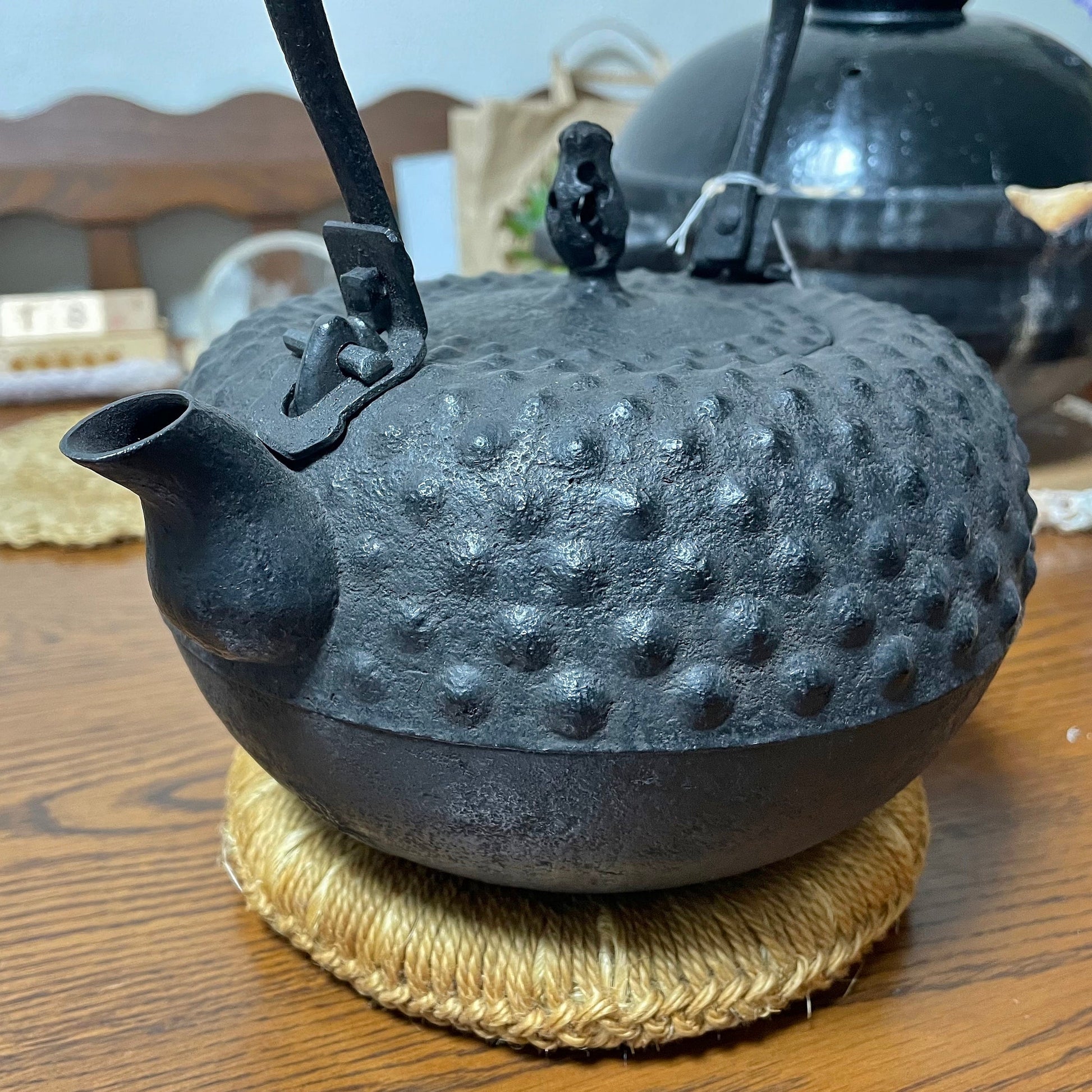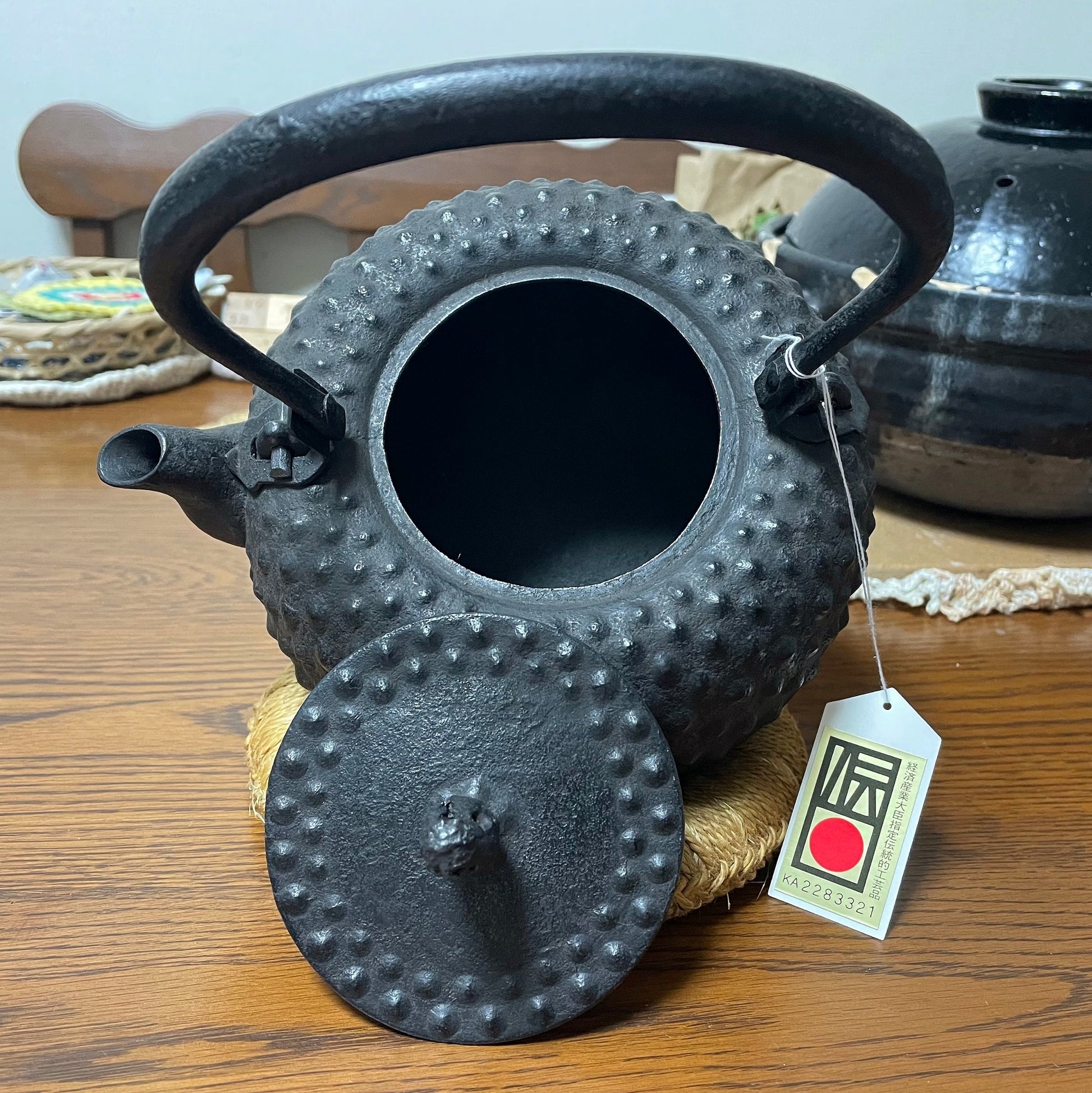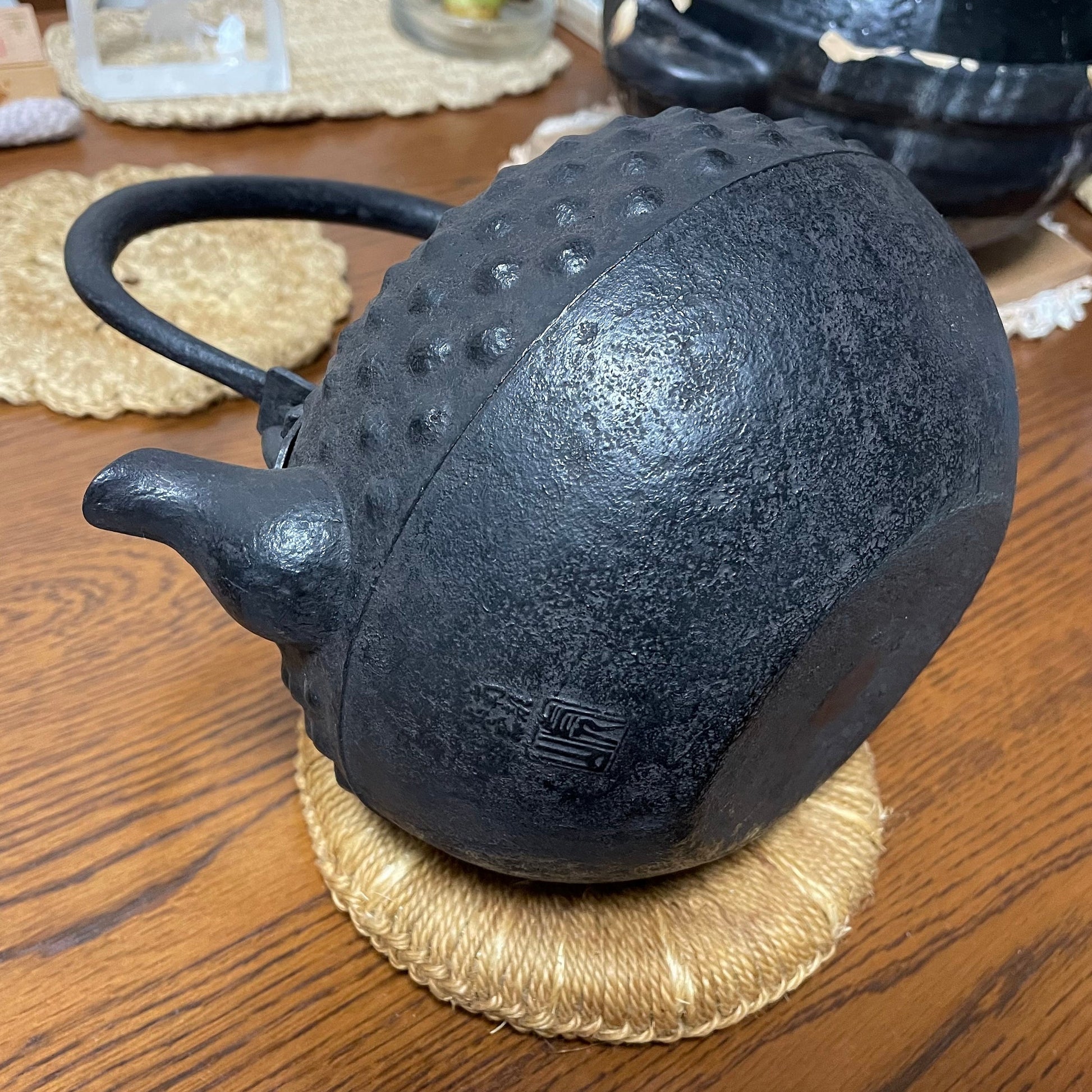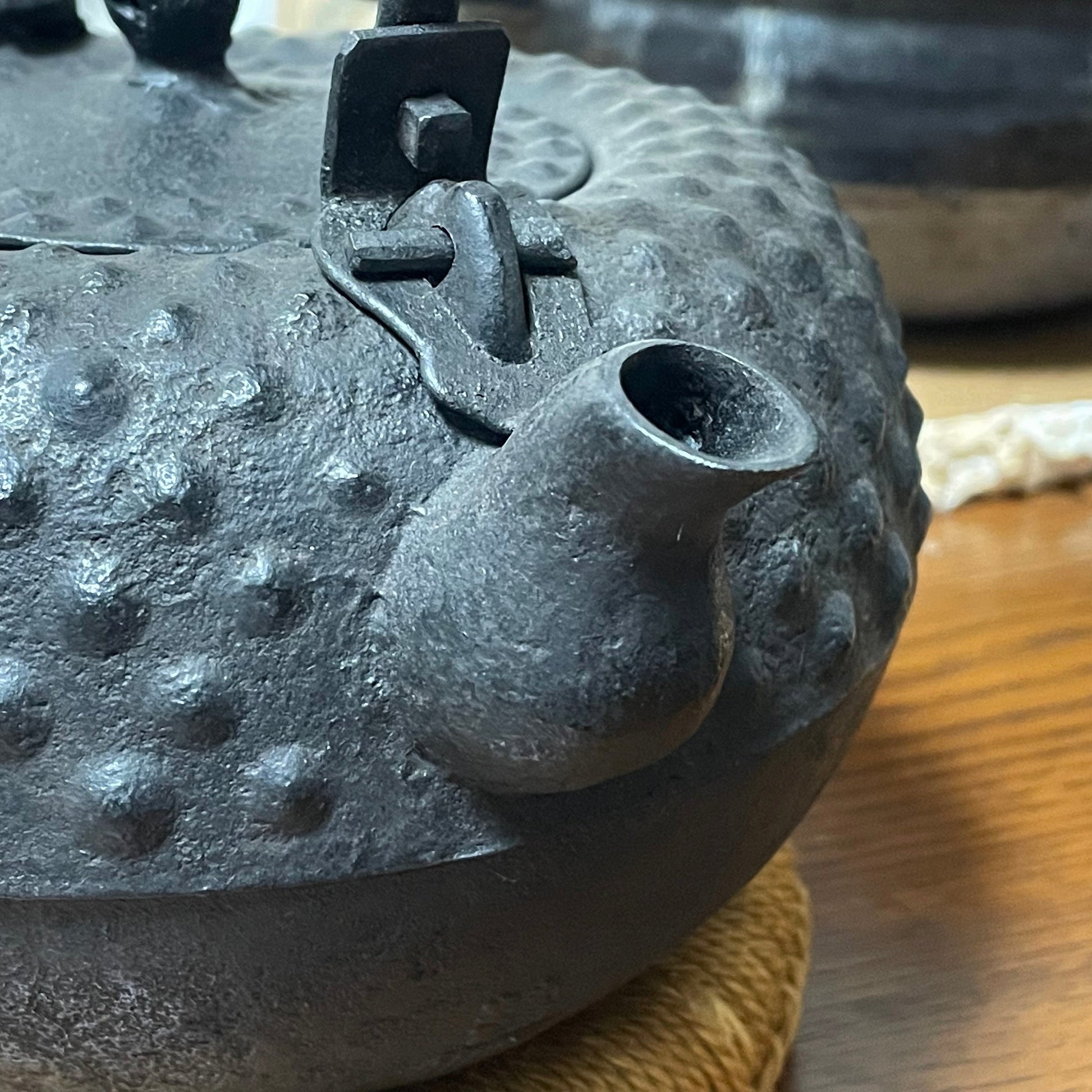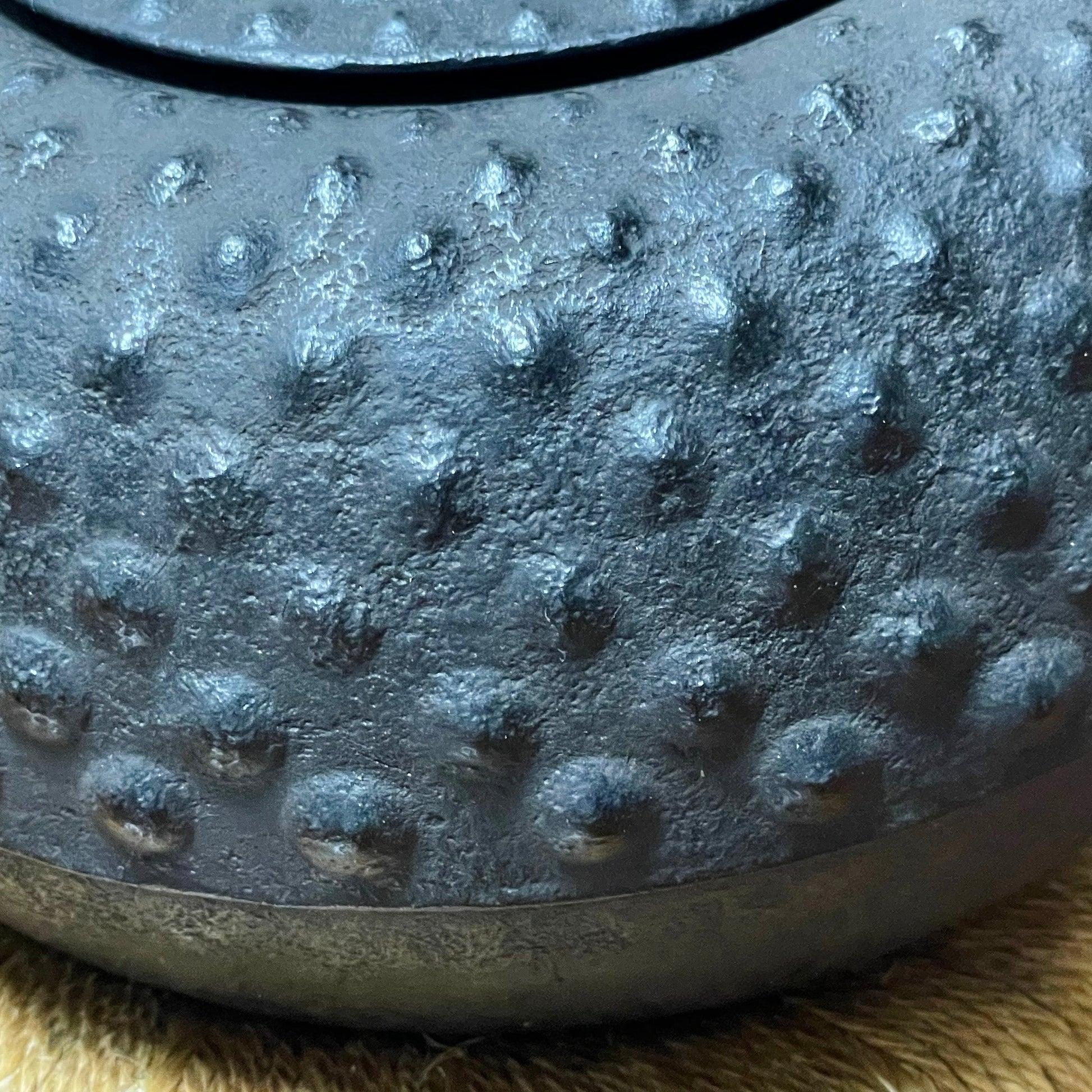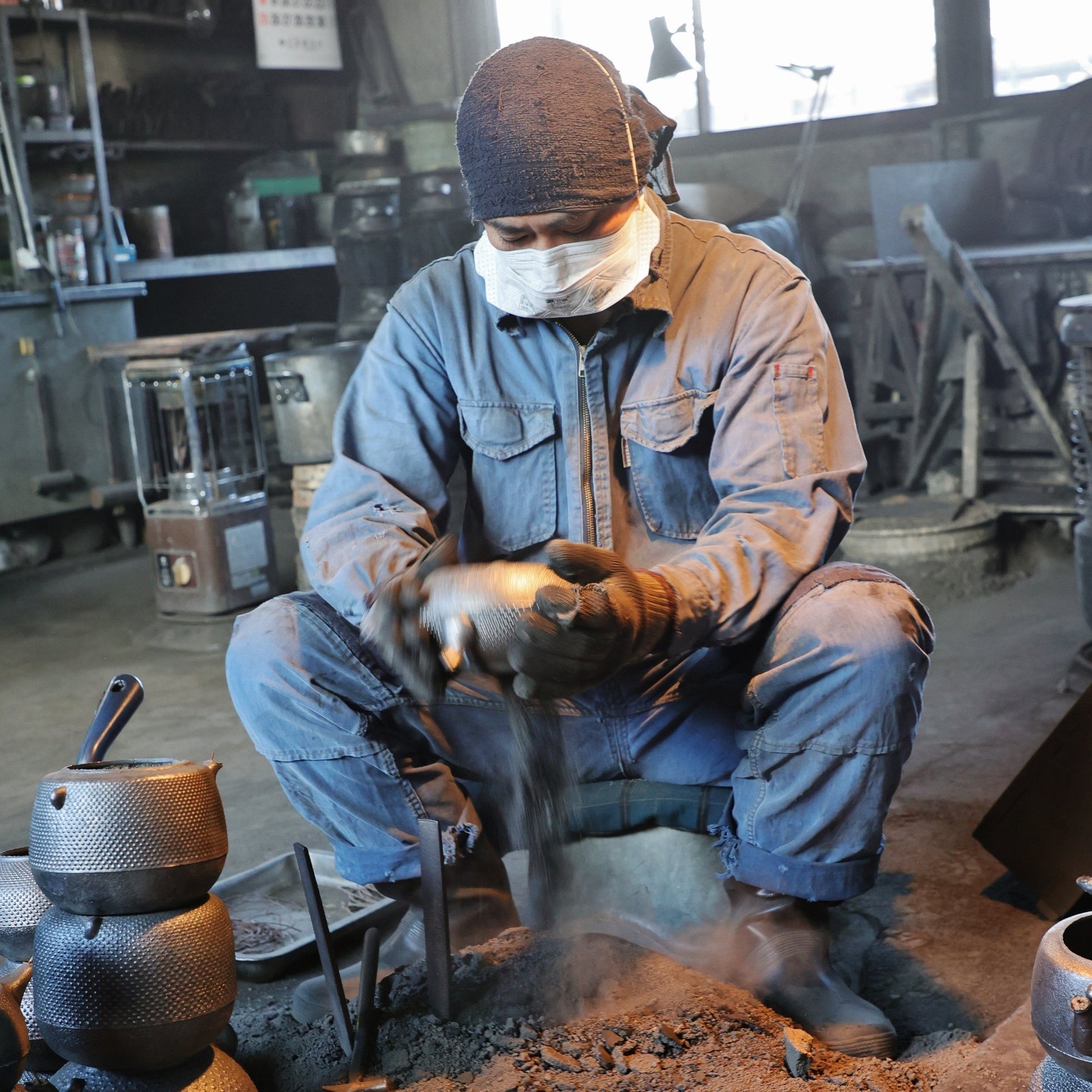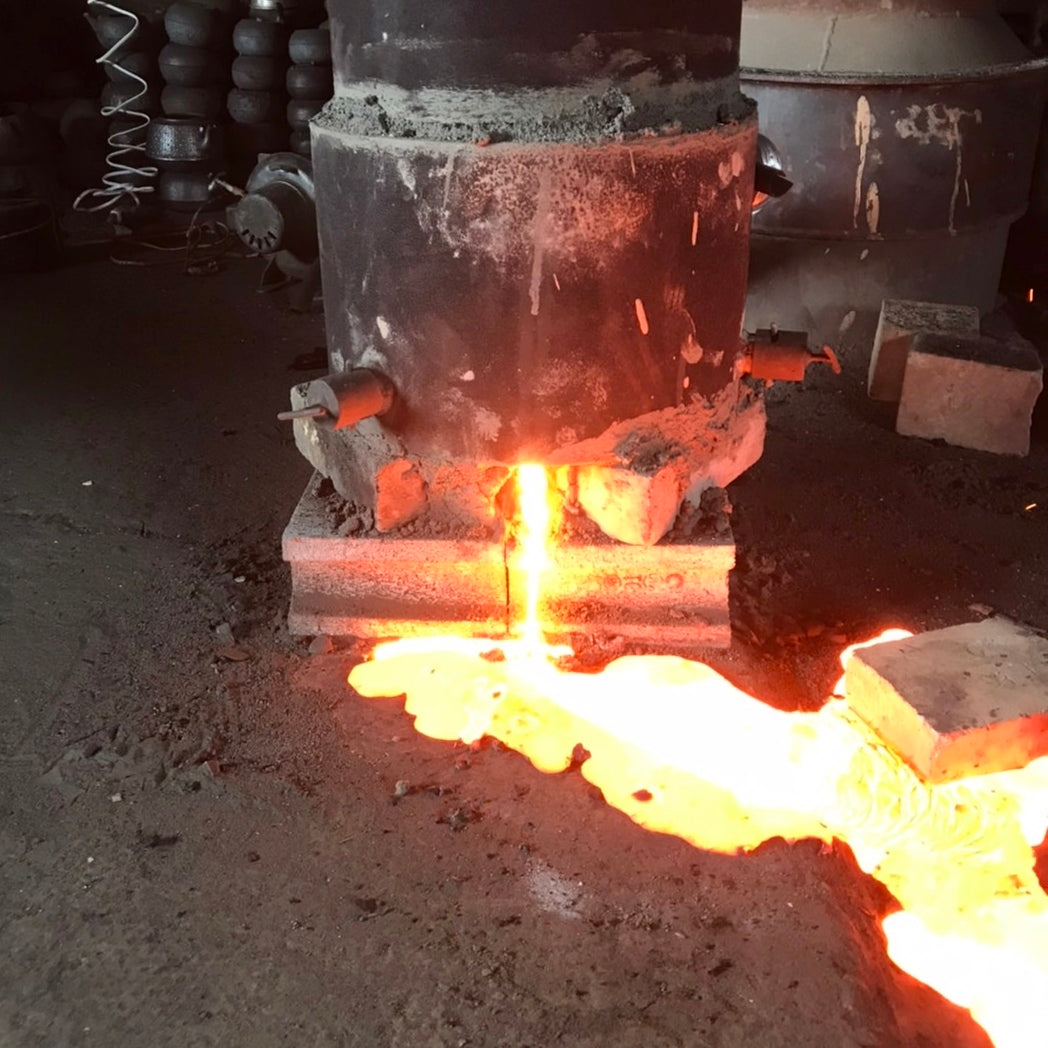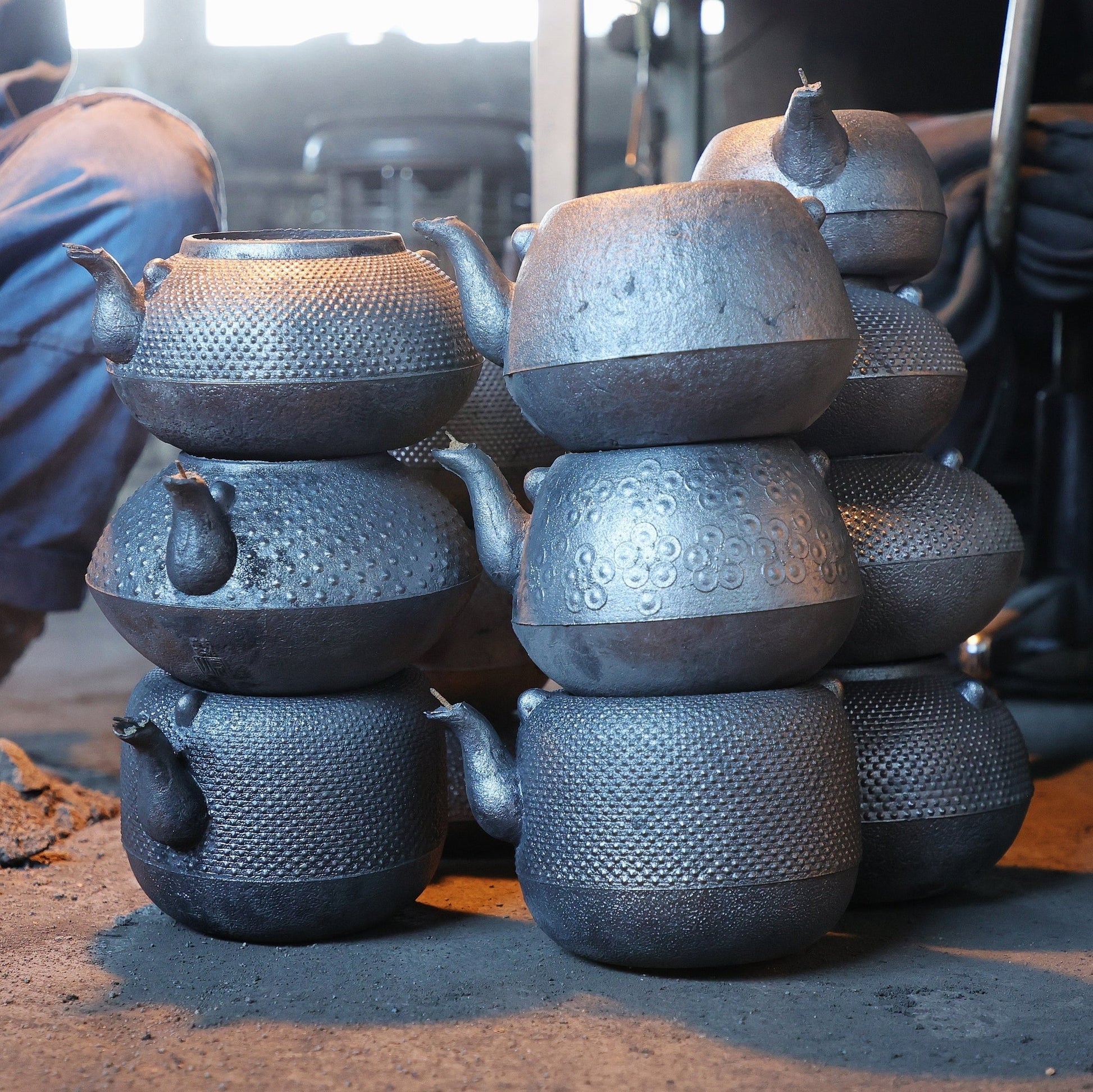ARTradeJAPAN
Tetsubin for DW, Singapore
Tetsubin for DW, Singapore
受取状況を読み込めませんでした
Hello from Japan. Thank you very much for visiting our online shop.
"Tetsubin" iron kettle, also known as "Nanbu tekki" "Nanbu tetsubin", is a traditional Japanese kettle made of iron, iron casting.
The design of this model is called as "Tetsuhachi", one of the traditional designs of Tetsubin.
Two big features :
Tetsubin is loved around the world for two main reasons.
The first is its beautiful and attractive shape. The form is a mixture of ruggedness and delicacy that makes it hard to believe that it was made of cast iron, and it stands out from the rest of the world's ironware.
Softens the taste of hard water :
Another secret of the Tetsubin's popularity is its ability to convert hard water into soft water: by boiling water in the Tetsubin, Calcium and other minerals in the water are absorbed by the inner walls and removed, leaving the water mellow and mild in flavor.
The degree of mellowness depends on the individual's taste, but many people around the world enjoy tea and coffee made with mellow water heated by Tetsubin. If your local tap water is hard, you will benefit from the functional benefits of Tetsubin.
The inner surface is not chemically coated, so if you drink water (hot water) boiled in this tetsubin, you can take in trace amounts of iron.
Tetsubin iron kettle is originated in the Iwate prefecture of Japan during the 17th century and is still produced today by skilled craftsmen in the same region.
Tetsubin iron kettle is made mainly from pig iron. Its appeal lies in its simplicity and robustness, as well as its simple and deep flavor. Lacquer is applied to the finish to prevent rust, and the unique design that makes the most of the softness of the iron material creates an expression unique to Tetsubin iron kettle.
Our Tetsubin has been certified as a traditional craft by the Ministry of International Trade and Industry of Japan. It is not mass produced. Skilled craftsmen put their hearts into making each one by hand.
In recent years, the popularity of Tetsubin has spread not only in Japan but also overseas,. Because Tetsubin has both values as a traditional craft, and being able to soften hard water to milder tast of tea, coffee and etc. FAQ is noted at the end of the document.
Difference between Tetsubin iron kettle and iron teapot :
The main difference between iron kettle (Tetsubin) and iron teapot (Tetsu Kyusu) is that the former is for boiling water and can be used over an open flame. The latter is for brewing tea and should not be used over an open flame. This exhibition product, our products, is the former.
Model : Tetsuhachi
P/N : T005
Surface Pattern : Dai-Arare (big Arare)
Capacity : 1.6L
Weight:
Diameter of aperture: 8.4cm (3.3 inches)
Manufacturer: Kozan Kobo, Morioka-city, Iwate-prefecture
Free shipping :
The product price includes shipping. You don't have to pay for shipping.
We ship our goods by DHL, the most reliable door to door shippping service.
Shipping insurance is included.
VAT / Import tax :
Our price does not include VAT or any import tax.
Please pay it at your responsibility if required.
BtoB :
We are good at overseas sales and shipment for larger quantity.
If you would like to purchase more than one Tetsubin at the same time, please feel free to contact us so we can accommodate that request. We will also be happy to negotiate with you for ongoing purchases specifying the model, so please ask us anything you need.
Frequently Asked Questions
Q: Is the inside of a Tetsubin coated?
A: No. Tetsubin is not coated with enamel or other chemical coatings, but is made using an ancient traditional technique called "Kanakedome. The inside of the tetsubin is protected from rust by an oxide film created by baking the tetsubin over a charcoal fire at about 900 degrees C until it turns bright red. If a chemical coating were applied, there would be no dissolution of trace amounts of iron and no adsorption and removal of minerals.
Q: What is the key to using Tetsubin successfully?
A1: It is important not to destroy the internal oxide film. As you continue to use Tetsubin, a layer of mineral adsorption called "hot water stain" will form on the inside, but you should not wash it with detergent or scrub it with a scrubbing brush. It is important that you do not scrub the interior from the time you start using it all the time.
A2: When you start using Tetsubin, you should run it through the break-in process several times by boiling water and discarding it.
A3: Once the water is boiled, transfer it to a pot or other container to avoid leaving water inside the Tetsubin. Allow the water to evaporate in the residual heat after the water is boiled.
A4: When using the Tetsubin on an induction cooktop, use a medium flame or lower.
If you have question, please feel free to ask us by message of Etsy.
We are looking forward to your order, inquiry or question.
Best regards,
ARTradeJAPAN
Fujisawa-city, Kanagawa-prefecture, Japan
Share
